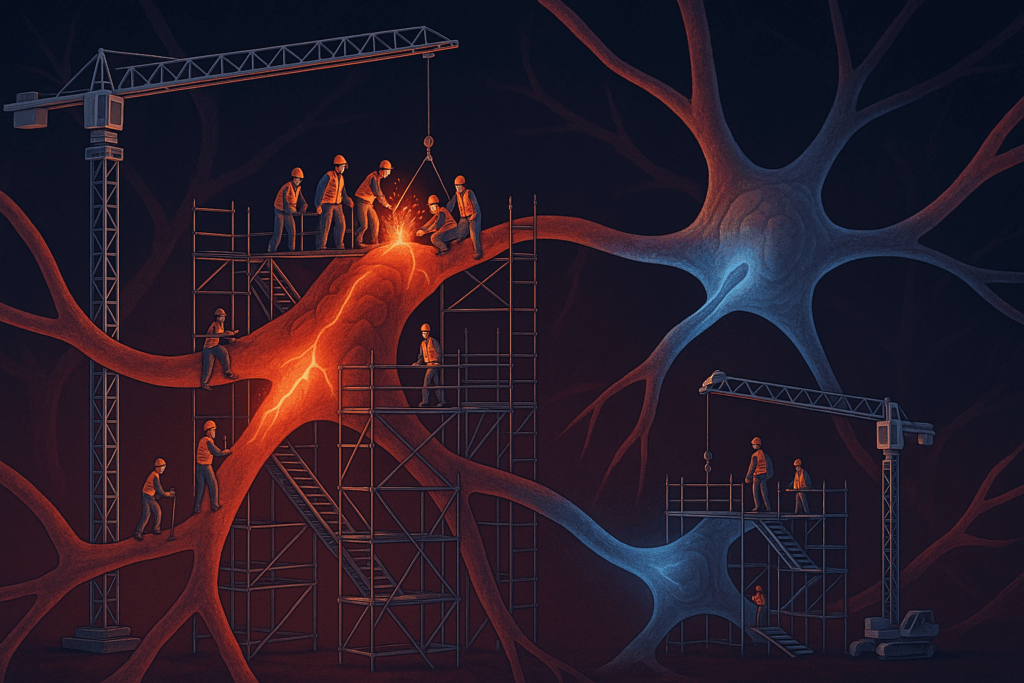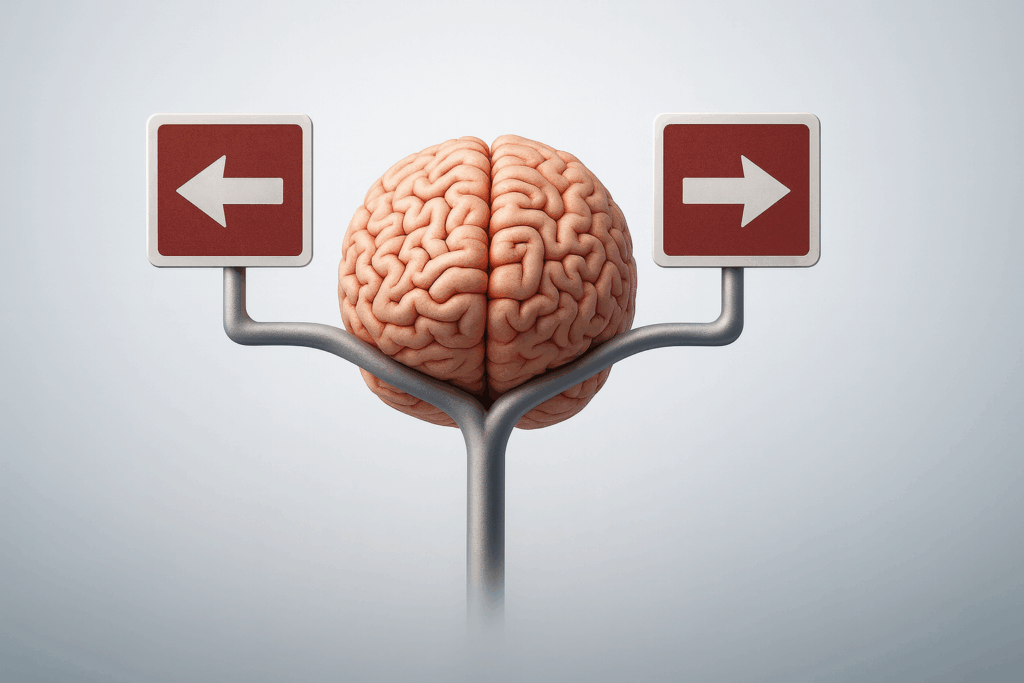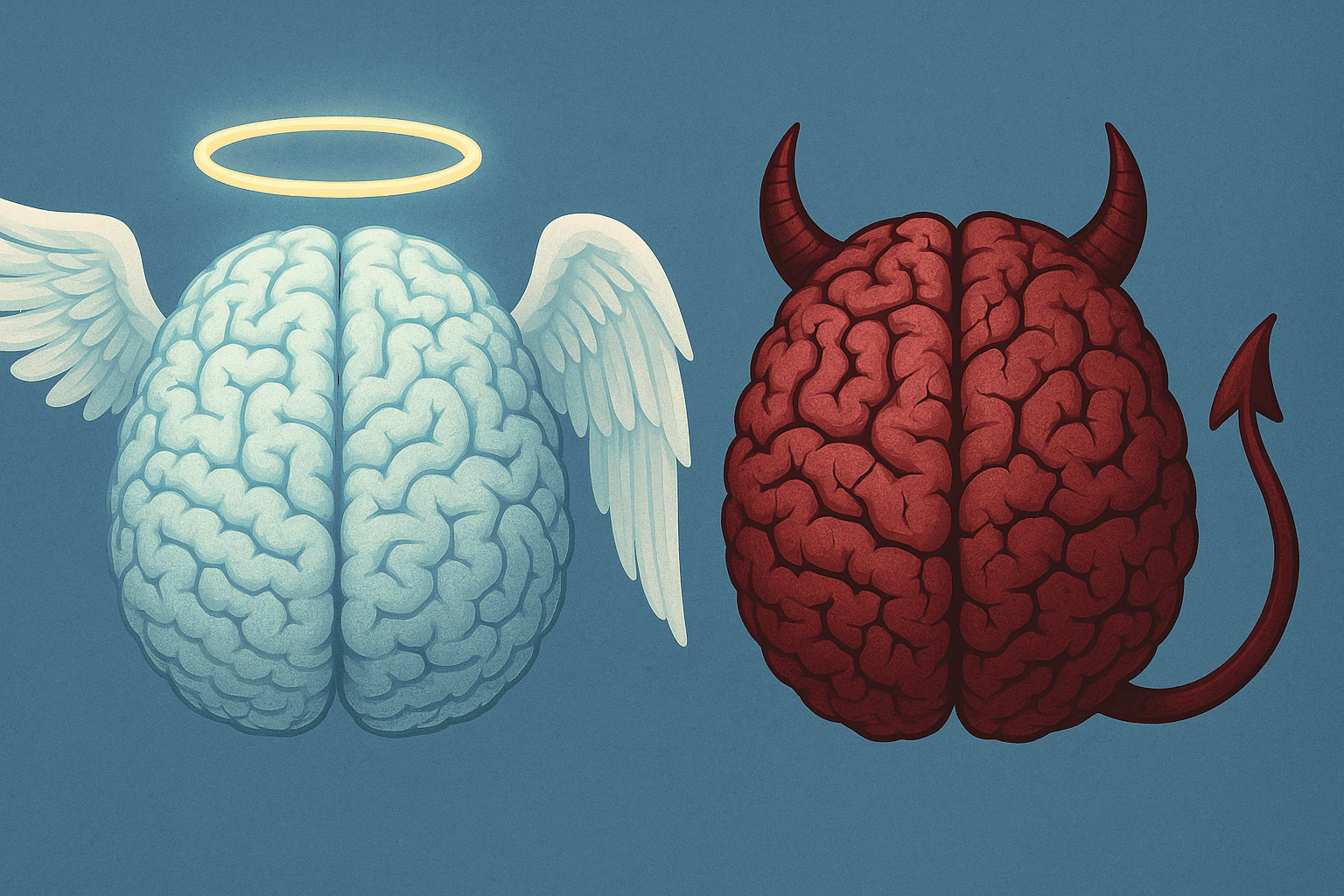Why the Monogamous Brain Matters
When you think about monogamy and infidelity, most people jump straight to morality. They see it as a simple choice between right and wrong, good and bad. But the monogamous brain vs unfaithful brain operates through different biological systems rooted in decades of neuroscience research. Understanding the monogamous brain vs unfaithful brain changes everything about how we approach betrayal and recovery. When couples understand what drives these two operating systems, something shifts. The blame softens. The path forward becomes clearer.
I’ve spent over 25 years working with couples facing infidelity, and what the neuroscience research reveals is this: the monogamous brain vs unfaithful brain isn’t just about willpower or character. They’re about neurobiology, evolution, and how our brains are wired for attachment, reward, and decision-making through mechanisms neuroscience has documented thoroughly. The monogamous brain vs unfaithful brain represents two different neurological states, and neither one is permanent.
The monogamous brain develops through repeated neural pathways that reinforce commitment, trust, and long-term bonding. The unfaithful brain operates under different neurochemical conditions, where novelty, dopamine spikes, and reduced inhibitory control can override long-term relationship goals. But here’s the crucial truth based on neuroscience: the monogamous brain vs unfaithful brain can shift. Recovery is possible. This blog explores the biological, evolutionary, and sociological foundations of the monogamous brain vs unfaithful brain and, more importantly, how couples can genuinely move forward after betrayal strikes.

The Evolutionary Foundation: Why Both the Monogamous Brain vs Unfaithful Brain Evolved
Before we dive deeper, we need to understand evolution through the lens of neuroscience research. The monogamous brain didn’t emerge by accident. It developed because certain survival advantages came with pair bonding. When two parents stayed together, their offspring had better protection, more resources, and higher survival rates. Over millennia, this selected for brain structures and neurochemicals that made the monogamous brain vs unfaithful brain response possible, something neuroscience confirms.
Here’s what’s fascinating from a neuroscience perspective: humans aren’t entirely monogamous creatures. We’re what researchers call “”socially monogamous,”” which means we form long-term pair bonds while possessing the biological capacity for the unfaithful brain to activate. The monogamous brain vs unfaithful brain coexist within us. We evolved the monogamous brain, yes, but we also retained the ability to be unfaithful. Both systems persist in the human brain, according to neuroscience research.
The unfaithful brain isn’t a modern invention rooted in a lack of neuroscience knowledge. Throughout human evolution, infidelity has occurred. Men and women both have the capacity to pursue extra-pair relationships for reasons ranging from genetic diversity to simple novelty-seeking. The monogamous brain vs unfaithful brain represents two different operating systems within the same person, depending on context, stress, opportunity, and neurochemical state, a reality neuroscience has clarified.
This matters culturally because we’ve built entire legal, religious, and social systems around the assumption that monogamy should be the default. But evolution suggests something different based on what neuroscience has revealed: we have the capacity for both the monogamous brain vs unfaithful brain. Understanding when the unfaithful brain activates and how the monogamous brain can be strengthened becomes essential for relationship recovery, according to neuroscience.

The Biological Science of the Monogamous Brain: How Bonding Works
The monogamous brain operates through several key neurochemical systems explained through neuroscience. The first is oxytocin, often called the “”bonding hormone.”” When you’re in a committed relationship and spending time with your partner, oxytocin releases in your brain through mechanisms neuroscience has extensively studied. This hormone literally wires your brain toward that person. It reduces your fear response, increases trust, and makes physical touch feel rewarding. Over time, repeated oxytocin release creates neural pathways that make the monogamous brain vs unfaithful brain distinction clearer in your brain based on neuroscience principles.
The second system is dopamine, but it’s not what most people think based on popular neuroscience misunderstandings. Yes, dopamine is a novelty and reward chemical, but the monogamous brain also harnesses it through predictability and attachment. When you know your partner, when you understand their body and mind, and when you can predict and create pleasure together, that’s dopamine too. The monogamous brain learns to get dopamine hits from the familiar rather than from the novel, a finding supported by neuroscience.
The third system involves the ventromedial prefrontal cortex, your brain’s decision-making and values center, according to neuroscience research. In someone with a strong monogamous brain, this area is highly activated when thinking about their partner. This region reinforces your long-term goals, fidelity values, and commitment. This brain region literally votes for monogamy every single day through small decisions and reinforcements shaped by neuroscience principles.
The amygdala, your threat-detection center, also plays a critical role understood through neuroscience. When you’re in a secure relationship, your amygdala is calm around your partner. You don’t perceive them as a threat. Instead, you perceive threats to the relationship itself, and this activates protective behaviors based on how neuroscience has mapped your threat response. The monogamous brain sees infidelity as a threat worth avoiding because it threatens something precious.
What’s fascinating from a neuroscience standpoint is that the monogamous brain vs unfaithful brain balance isn’t fixed. It develops through practice, repeated bonding, and the consistent activation of these neural pathways based on neuroplasticity principles from neuroscience. Someone raised without secure attachment can develop a stronger monogamous brain through intentional relationship work informed by neuroscience. Someone with a history of being unfaithful can build the monogamous brain vs unfaithful brain strength by understanding their patterns and rewiring their neurobiology through new choices supported by neuroscience research.

Understanding the Unfaithful Brain: When Neural Pathways Go Off Course
The unfaithful brain operates under very different conditions, as explained by neuroscience research. This isn’t about morality; it’s about neurobiology. The unfaithful brain activates when several factors align: stress, opportunity, reduced inhibitory control, and novelty-seeking dopamine dominance, a pattern neuroscience has identified repeatedly. The monogamous brain vs unfaithful brain competition intensifies under these circumstances.
When someone’s under chronic stress, their prefrontal cortex, the decision-making center, becomes depleted, according to neuroscience. The unfaithful brain thrives in this state because decision-making authority shifts toward older, more automatic brain regions like the limbic system, according to neuroscience principles. These older systems care about immediate reward, not long-term consequences. They aren’t concerned about your marriage vows. They care about the dopamine hit available right now.
Novelty triggers the unfaithful brain powerfully, and neuroscience explains the mechanism. New people activate the dopamine system in ways long-term partners can’t match. Such an attribute isn’t a flaw; it’s actually an evolutionary advantage according to neuroscience. Our brains are wired to notice and pursue novel reproductive opportunities because neuroscience shows that genetic diversity strengthens offspring. The monogamous brain vs unfaithful brain struggle is partly rooted in this ancient system identified through neuroscience research.
The unfaithful brain also activates when inhibitory control weakens, something neuroscience has documented thoroughly across numerous studies. Alcohol reduces inhibition through mechanisms neuroscience has mapped. Fatigue reduces it based on neuroscience research. Emotional dysregulation reduces it, according to neuroscience. Loneliness reduces it, as neuroscience confirms. In these states, the unfaithful brain doesn’t need much opportunity. A text message, a glance, a moment alone, and suddenly the neural pathways that normally keep you committed are overridden by pathways seeking reward.
What’s important to understand through the lens of neuroscience is that the unfaithful brain isn’t someone’s true self. It’s not their core identity. It’s a temporary neurological state where the wrong circuits are in charge. This distinction matters enormously for couples working through infidelity, because neuroscience shows that the monogamous brain vs unfaithful brain dynamic can shift. The unfaithful brain doesn’t have to be permanent based on what neuroscience research reveals. It can be recognized, understood, and redirected through neuroplasticity principles supported by neuroscience.

The Sociological Layer: Culture, Expectations, and the Monogamous Brain vs Unfaithful Brain
We can’t discuss the monogamous brain vs unfaithful brain without examining the cultural context, even though neuroscience remains our primary lens. Sociology reveals that monogamy expectations vary wildly across cultures and time periods. In some societies, the monogamous brain is aggressively reinforced through law and religion. In others, extra-pair relationships carry far less stigma from a sociological perspective rooted in different cultural neuroscience expressions.
Cultural programming shapes how our brains wire, according to neuroscience research on development. If you grow up in a culture where the monogamous brain is celebrated and infidelity is condemned, your brain will wire differently than someone raised in a culture with different norms, something neuroscience has demonstrated through cross-cultural studies. The monogamous brain vs unfaithful brain balance develops partly through biological predisposition and partly through cultural reinforcement.
Modern Western culture is deeply ambivalent about monogamy. We’re bombarded with messages about sexual freedom, opportunity, and choice. Dating apps make the unfaithful brain’s preferred stimulus, novelty, instantly available in ways previous generations never experienced. We live in a time where the monogamous brain faces unprecedented competition from systems designed to activate the unfaithful brain through mechanisms neuroscience has identified as particularly powerful.
Yet simultaneously, we maintain intense cultural expectations around exclusivity and commitment. This creates a neurological conflict within people that neuroscience can help explain. Your monogamous brain wants to honor your commitment. Your unfaithful brain is being constantly stimulated by a culture of infinite options. This isn’t a personal failing; it’s a neurobiological conflict created by living in a specific cultural moment, something neuroscience research clarifies.
Sociology also shows us that infidelity affects different genders differently in ways that both neuroscience and sociology illuminate together. Research suggests men and women have different motivations for infidelity, different patterns, and different recovery paths documented through both sociological and neuroscience research. Understanding these patterns helps the monogamous brain vs unfaithful brain framework become more nuanced and individually relevant rather than one-size-fits-all.
How I Work With Couples: Repairing the Monogamous Brain vs Unfaithful Brain After Betrayal
In my practice, infidelity is one of the most challenging issues couples face, but it’s also one where I’ve seen the most profound transformation when applying protocols informed by neuroscience research. Here’s what I’ve learned through 25 years of clinical work: infidelity doesn’t have to end a relationship. The monogamous brain can be rebuilt. Trust can be restored. But it takes something most people don’t expect, according to what neuroscience research reveals.
It takes the betraying partner becoming radically honest about their unfaithful brain and what activated it. We explore the topic through careful questioning that is informed by neuroscience research: What activated the unfaithful brain? What neurological conditions were present? What stress, depletion, opportunity, and unmet need combined to create the ideal conditions? And crucially, through understanding the monogamous brain vs unfaithful brain dynamic at a neurological level, the betrayed partner learns that their partner’s unfaithful brain isn’t their partner’s essence. It’s a neurological state that emerged under specific conditions documented by neuroscience.
The couples I work with go through a specific protocol grounded in neuroscience principles. First, we map neurobiology through assessments informed by neuroscience research. We explore what was happening in the nervous system when the infidelity occurred. Was the betraying partner in a chronic stress state? Were they using substances that, according to neuroscience research, reduce inhibitory control? Were they lonely, depleted, or disconnected? The monogamous brain weakens under certain conditions explained by neuroscience, and understanding those conditions is essential for repair.
Second, we rebuild the monogamous brain through what I call “neuroplasticity protocols” grounded firmly in neuroscience research and principles. This means the betraying partner deliberately activates their commitment-based neural pathways through exercises informed by neuroscience. They write about their values. They visualize their monogamous future. They practice gratitude for their partner daily. They engage in deliberate bonding activities. The monogamous brain strengthens through repetition and intention, a mechanism neuroscience has extensively validated.
Third, we address the betrayed partner’s trauma response using protocols informed by neuroscience research. Infidelity is a betrayal trauma. The nervous system has been shattered, as the trauma neuroscience documents extensively. The monogamous brain’s assumption of safety has been violated. This requires nervous system regulation work grounded in neuroscience principles. It requires building new safety protocols. It requires the betraying partner demonstrating through consistent behavior over months, not days, that the monogamous brain is now in charge.
Fourth, we work on what couples call “”moving forward,”” but I call “”neurological integration”” applying neuroscience principles throughout the process. The couple can’t pretend the infidelity didn’t happen, but they also can’t stay frozen in it, according to what neuroscience research on trauma recovery shows. This requires developing shared meaning about what happened, about the unfaithful brain, and about the vulnerability that was revealed. Interestingly, many couples who do this deep work emerge with a stronger monogamous brain vs unfaithful brain foundation than before because they understand the fragility of commitment and the intentionality required to maintain it based on what neuroscience teaches.
The timeline is important to understand, according to neuroscience research on neuroplasticity. This work takes months, not weeks. The monogamous brain doesn’t rebuild quickly based on what neuroscience research shows about neural pathway development. Trust doesn’t restore overnight, according to neuroscience. But I’ve seen hundreds of couples move through infidelity and build genuinely stronger relationships on the other side. The monogamous brain, once rebuilt consciously through this work grounded in neuroscience, is often more resilient than one that simply assumed fidelity would happen automatically.
One couple I worked with, a married pair in their mid-forties, came to me after the husband’s infidelity. He’d had a brief affair during a period of extreme stress at work and disconnection from his marriage. His unfaithful brain had activated in a vulnerable moment. His wife was devastated. But through understanding the monogamous brain vs unfaithful brain dynamic at a neurological level supported by neuroscience research, she came to see his infidelity not as proof that his monogamous brain was broken, but as evidence that he needed to develop one more deliberately and consciously.
They did the work grounded in principles informed by neuroscience research. The husband addressed his stress responses, his work-life integration, and his vulnerability to having his unfaithful brain activated through interventions supported by neuroscience. His wife worked on her nervous system, her trust, and her ability to see her husband’s monogamous brain re-establish itself through methods informed by neuroscience. Two years later, their relationship was stronger. Why? Because the monogamous brain vs unfaithful brain framework gave them language and biological understanding informed by neuroscience instead of simple blame. She understood that the infidelity wasn’t about his true character but about a temporary neurological state that could be changed according to what neuroscience research reveals.

The Role of Dopamine: The Chemical Behind Monogamy and Infidelity
Dopamine deserves its own section because it’s central to understanding the monogamous brain vs unfaithful brain dynamic grounded in neuroscience research. Most people think dopamine is only about novelty and excitement, but neuroscience research reveals something more complex. Dopamine is about motivation, goal pursuit, and reward anticipation across all contexts.
In a healthy monogamous brain, dopamine gets redirected toward commitment through mechanisms neuroscience has identified. When you’re in a strong relationship, your brain learns to anticipate reward from your partner, according to neuroscience research. The monogamous brain develops sophisticated dopamine pathways around long-term bonding, explained through neuroscience. You feel dopamine in anticipation of seeing your partner. You feel it during intimate connection. You feel it in small moments of shared meaning. The monogamous brain becomes efficient at generating dopamine around the familiar rather than the novel.
The unfaithful brain hijacks dopamine toward novelty through mechanisms neuroscience has documented. A new person triggers dopamine in ways your long-term partner can’t match, according to neuroscience research. This isn’t shallow; it’s neurobiological. The novelty system in your brain literally floods with dopamine through processes neuroscience has mapped extensively. The unfaithful brain feels alive in ways the monogamous brain sometimes doesn’t, especially in long-term relationships that have become routine. Understanding the monogamous brain vs unfaithful brain means recognizing this dopamine pull grounded in neuroscience research.
Here’s the crucial insight most people miss based on what neuroscience reveals: you can retrain dopamine through neuroplasticity mechanisms supported by neuroscience research. The monogamous brain can be strengthened by deliberately generating novelty within your relationship through practices informed by neuroscience. Couples who travel together, who try new experiences, who maintain sexual novelty within their commitment, and who continue learning and growing together activate dopamine around their partnership, according to neuroscience. The monogamous brain becomes exciting again.
Conversely, when the monogamous brain becomes bored, routine, and dopamine-depleted based on patterns neuroscience has identified, the unfaithful brain becomes more tempting. Understanding this through the lens of neuroscience means couples can actively work to keep dopamine flowing within their monogamous commitment. This is relationship maintenance grounded in how the brain actually works according to neuroscience research. The monogamous brain vs unfaithful brain balance depends partly on dopamine management.
Stress, the Monogamous Brain vs Unfaithful Brain, and When Fidelity Fails
Chronic stress is one of the most powerful activators of the unfaithful brain, according to neuroscience research. When you’re under sustained stress, your prefrontal cortex, the seat of values and long-term decision-making, becomes depleted through mechanisms neuroscience has identified. Meanwhile, older brain systems seeking immediate relief and reward take over, as neuroscience research demonstrates happens under chronic stress. The unfaithful brain flourishes under stress. The monogamous brain vs unfaithful brain balance shifts dangerously based on what neuroscience shows.
I’ve watched this pattern repeatedly in my practice over 25 years. A man gets promoted into a high-stress job. The monogamous brain weakens because his prefrontal cortex is consumed with work stress, according to patterns neuroscience has documented. Meanwhile, a colleague offers attention, validation, and ease. Suddenly, the unfaithful brain activates through mechanisms neuroscience explains. He doesn’t necessarily want to betray his marriage. His prefrontal cortex, the part that wants his marriage, is too depleted to lead anymore based on how neuroscience shows stress affects decision-making. The monogamous brain vs unfaithful brain battle has been decided by stress.
A woman repeatedly experiences emotional invalidation from her partner. Chronic relational stress depletes her nervous system through mechanisms neuroscience has documented in relationship trauma research. When someone at work makes her feel seen, the unfaithful brain awakens through pathways neuroscience has mapped. Again, it’s not about character. It’s about a nervous system pushed into conditions where the monogamous brain can’t remain in charge, based on what neuroscience research shows about nervous system regulation.
This understanding should shift how we view infidelity based on what neuroscience research reveals. It’s not primarily a character issue. It’s a stress management and nervous system regulation issue informed by neuroscience research. The monogamous brain fails when someone’s nervous system is dysregulated, depleted, and seeking relief, according to neuroscience. This means preventing infidelity isn’t about stronger willpower. It’s about maintaining nervous system health and a strong, engaged monogamous brain through practices informed by neuroscience research. The monogamous brain vs unfaithful brain outcome depends on these practical factors documented by neuroscience.

Neuroplasticity and Rebuilding: Can the Unfaithful Brain Change?
The answer to whether the unfaithful brain can change is absolutely yes, according to extensive neuroscience research on neuroplasticity. This is where neuroplasticity transforms into a source of hope based on neuroscience research and principles. Your brain isn’t fixed. The neural pathways that led to infidelity can be interrupted and rewired through neuroplasticity mechanisms documented by neuroscience. Someone who’s been unfaithful can develop a strong, resilient monogamous brain through interventions informed by neuroscience research.
The process requires understanding what neural pathways were active during the infidelity through assessment informed by neuroscience research. Next, individuals must deliberately create new neural pathways by repeatedly practicing different choices, thoughts, and behaviors, all guided by principles derived from neuroscience research. This takes months, usually six months at minimum, according to neuroscience research on neural pathway development. The monogamous brain, when rebuilt through intentional work grounded in neuroscience principles, is often stronger than one that was never tested because it’s been consciously reinforced through mechanisms neuroscience has validated.
Neuroplasticity also means the betrayed partner’s brain can heal through processes explained by neuroscience research. The trauma of infidelity can be processed through interventions informed by neuroscience research. Trust can be rebuilt through consistent demonstration of changed behavior validated by neuroscience principles. The nervous system can return to a state where the monogamous brain feels safe again through neuroplasticity documented in neuroscience research. This isn’t about forgetting the infidelity. It’s about integrating it into a larger narrative of recovery and growth grounded in neuroscience principles.
Moving Forward: The Monogamous Brain vs Unfaithful Brain as a Daily Practice
Here’s what I want couples to understand, grounded in neuroscience research: the monogamous brain isn’t something you have or don’t have. It’s something you practice every day based on principles from neuroscience research. Every single day, through small choices, you’re either building the monogamous brain or allowing the unfaithful brain more access, according to how neuroscience shows neuroplasticity works. The monogamous brain vs unfaithful brain balance is something you actively create through daily practice.
Choosing your partner’s company strengthens the monogamous brain. You strengthen your monogamous brain when you set aside your phone and engage in genuine connection with your partner. Intentionally making love strengthens the monogamous brain. This occurs when you approach conflict with a sense of commitment, rather than with disdain. This occurs when you pay attention to your partner and communicate that awareness. Every one of these choices rewires your brain toward monogamy through mechanisms neuroscience has extensively documented.
The monogamous brain weakens when you’re constantly distracted, when you allow emotional distance, when you stop prioritizing your partnership, and when you leave your nervous system dysregulated and your prefrontal cortex depleted, according to patterns neuroscience has identified. In these states, the unfaithful brain becomes more likely based on neuroscience research. The monogamous brain vs unfaithful brain outcome depends on your daily choices informed by understanding neuroscience.
Understanding this dynamic grounded in neuroscience research affords couples a framework that’s hopeful and realistic. It says infidelity isn’t destiny. It says the monogamous brain can be built and rebuilt through neuroplasticity mechanisms supported by neuroscience. It says couples can genuinely recover from betrayal, not by pretending it didn’t happen, but by understanding the biology beneath it and intentionally creating different neural pathways going forward based on principles from neuroscience research. The monogamous brain vs unfaithful brain isn’t about luck; it’s about practice informed by neuroscience.

The Monogamous Brain vs Unfaithful Brain as Choice and Biology
The monogamous brain vs unfaithful brain aren’t fixed opponents battling within you according to neuroscience research. They’re different operating systems grounded in neuroscience, and which one’s in charge depends on your stress levels, your choices, your neurochemical state, and your repeated practices explained by neuroscience research. Understanding this changes everything about how we approach commitment, infidelity, and recovery through principles informed by neuroscience.
From an evolutionary perspective, humans have the capacity for both monogamy and infidelity according to neuroscience research documenting this capacity. We evolved the monogamous brain because long-term pair bonding offered survival advantages documented through neuroscience research. But we retained the ability to be unfaithful. Both persist. The monogamous brain vs unfaithful brain represents this ancient tension within us identified through neuroscience.
From a biological perspective informed by neuroscience research, the monogamous brain is built through oxytocin, dopamine, prefrontal cortex engagement, and amygdala calm explained through neuroscience research. The unfaithful brain activates under stress, opportunity, and depleted inhibitory control, understood through neuroscience. Neither is permanent. Both can be strengthened or weakened through neural pathways and repeated practice documented by extensive neuroscience research.
From a sociological perspective, our culture sends mixed messages about monogamy, which creates internal conflict within people who want to maintain monogamous commitment while being constantly exposed to stimuli designed to activate the unfaithful brain through mechanisms neuroscience research continues to reveal.
Most importantly, infidelity doesn’t have to end a relationship grounded in neuroscience principles and research. The monogamous brain vs unfaithful brain framework shows that recovery is possible based on what neuroscience research demonstrates. Couples can heal by learning about the biology from neuroscience research, dealing with the nervous system issues that led to infidelity, and intentionally rebuilding their commitment using neuroplasticity. The couples I work with who do this deep work emerge with stronger monogamous brains because they’ve become conscious and intentional about what was previously unconscious and assumed, a transformation neuroscience research makes possible.
Your monogamous brain is waiting. It’s built through daily practice, through intentional choices, through nervous system health, and through understanding that commitment is a biology you’re actively creating every single day grounded in neuroscience principles and supported by extensive neuroscience research. The monogamous brain vs unfaithful brain balance isn’t determined by fate. It’s determined by your choices, your awareness, and your commitment to building the neural pathways that serve your relationship and your future based on what neuroscience research reveals.
#MonogamousBrain #Neuroscience #Infidelity #RelationshipRecovery #CouplesTherapy #MindLABNeuroscience #Dopamine



